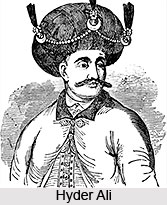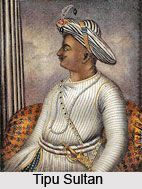 Religious administration of Tipu Sultan was one of the main practices he had accomplished. As per the history, Tipu tolerated the practice of Hindu religion within his own territory and became popular with all his subjects. Moreover, Tipu came to have a certain amount of faith in Hindus in the later part of his reign only as a result of his faith in the efficacy of Hindu ceremonies of incantation, etc.
Religious administration of Tipu Sultan was one of the main practices he had accomplished. As per the history, Tipu tolerated the practice of Hindu religion within his own territory and became popular with all his subjects. Moreover, Tipu came to have a certain amount of faith in Hindus in the later part of his reign only as a result of his faith in the efficacy of Hindu ceremonies of incantation, etc.
From the very beginning of his reigning period, Tipu Sultan was as sympathetic and faithful to the Hindus as to the Muslims. He made numerous charities and endowments to several Hindus and Hindu institutions. He granted several villages to the Hindus for building up Hindu temples, mutts, in the territory. He also granted permission for the construction of a mosque on the side of a Hindu temple. In addition to that, Tipu also granted life pension to some "acharyas" and to pagodas, presenting different articles for the temples and religious places. During the rule of Tipu, at the temples all the daily, annual and other periodical pujas, festivals, processions, worships, with all facilities and privileges provided for everyone connected with the temples according to traditions and all the court officials personally supported all the performances of the pujas. In Tipu"s time, the idol was installed in the Prasanna Venkateswara temple in Uratur in Kommaditima and provision was made for the expenses of daily worship and "inam" lands were granted to the Archakars and other servants of the temple.
Tipu Sultan was aware not only of the details of worship in Hindu temples, but, what is equally interesting is that he was aware of the delicate differences which have for generations together marked the Right-Hand and Left Hand sections of the people concerning privileges and honours in temples. Moreover, four different temples in four different parts of his kingdom received the privilege of royal gifts. These were the Ranganatha temple at the capital Srirangapattna, the Narasimha temple at Melukote, the Narayanasvami temple also at Melukote (Srirangapattna taluk), the Laksmikanta temple at Kalale (Nanjanagud taluk) and the Srikanthesvara temple at Nanjangud itself.The well-known Ranganatha temple at Srirangapattna was presented with seven silver cups and a silver camphor bearer by Tipu Sultan Pacca (Badshah), as is evident from the inscriptions on them.
 But in all likelihood such gifts were not the outcome of fear on the part of Sultan Tipu. These bespeak a genuine desire on the part of that monarch to show marked favour to those temples in the welfare of which he may have taken some personal interest. There are two considerations which prove that Sultan Tipu was sincere in his motives when he made gifts to Hindu temples. First, the policy of making presents to temples had already been set by his illustrious father. Thus an inscription on a silver cup belonging to the Gopala-jysna temple at Devanahalli informs us that the silver vessel was a gift to the temple from Hyder Ali. Secondly, Sultan Tipu"s policy of giving gifts to Hindu temples was followed by his Muslim officials. That Sultan Tipu was not unaccustomed to look to the spiritual needs of his vast Hindu subjects is proved beyond doubt by the third and the most important consideration relating to his attitude towards the Hindu dharma. This concerns Sultan Tipu"s relations with the celebrated Hindu seat of learning, the Sringeri Matha, which form a very interesting chapter of Hindu-Muslim concord in the annals of India. But here it is worthwhile remarking that the tradition of maintaining the most cordial relations with the Hindu centres of spirituality had really been begun by Sultan Tipu"s wise father, Hyder Ali.
But in all likelihood such gifts were not the outcome of fear on the part of Sultan Tipu. These bespeak a genuine desire on the part of that monarch to show marked favour to those temples in the welfare of which he may have taken some personal interest. There are two considerations which prove that Sultan Tipu was sincere in his motives when he made gifts to Hindu temples. First, the policy of making presents to temples had already been set by his illustrious father. Thus an inscription on a silver cup belonging to the Gopala-jysna temple at Devanahalli informs us that the silver vessel was a gift to the temple from Hyder Ali. Secondly, Sultan Tipu"s policy of giving gifts to Hindu temples was followed by his Muslim officials. That Sultan Tipu was not unaccustomed to look to the spiritual needs of his vast Hindu subjects is proved beyond doubt by the third and the most important consideration relating to his attitude towards the Hindu dharma. This concerns Sultan Tipu"s relations with the celebrated Hindu seat of learning, the Sringeri Matha, which form a very interesting chapter of Hindu-Muslim concord in the annals of India. But here it is worthwhile remarking that the tradition of maintaining the most cordial relations with the Hindu centres of spirituality had really been begun by Sultan Tipu"s wise father, Hyder Ali.
From different historical evidences, it has been made clear that Sultan Tipu"s relations with the Hindu centre of spiritual learning were the influence of his father, Hyder Ali. From 1769 till 1780, Nawab Hyder Ali Khan Bahadur had made it clear that a new chapter had been opened by him in the history of the relations of the Muslim rulers of Mysore with the head of the Hindu seat of spirituality at Sringeri. A number of letters that were the evidences of the dealings of Tipu with religious heads of the temples and religious centres stand evidence for the fact that Tipu Sultan used to maintain a regular correspondence with the heads.
The numerous letters that are derived as historical evidences prove beyond doubt that Sultan Tipu was certainly a great benefactor of one of the most renowned places of Hindu worship. Moreover, he was prepared to place his country above his own self even in the matter of prayers. People have indeed reason to be grateful to him for the prompt measures he took to resuscitate the cause of Hindu dharma in the great seat of Shankaracharya, when it was eclipsed by political calamity.



















